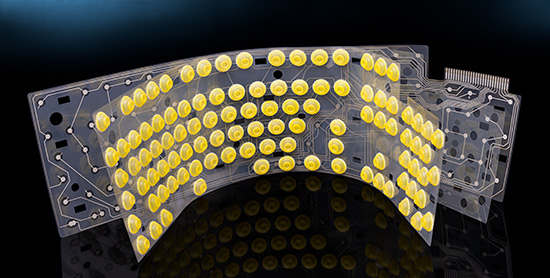EMC Question of the Week: February 14, 2022

Nearly all electronic keyboards are protected from electrostatic discharge by
- TVS diodes
- ESD rings
- a plastic membrane
- antistatic keys
Answer
The correct answer is “c.” Keyboards typically have a plastic membrane that extends under all of the keys. The membrane blocks all possible air paths between the touchable parts of the keys and the electronics below. It's an excellent example of meeting ESD requirements by preventing the discharge from occurring in the first place.
When a discharge cannot be prevented, TVS diodes and ESD rings can be used to redirect discharge currents away from sensitive circuitry. These solutions are often appropriate in situations where a switch or key is not protected by a membrane.
Making the keys slighting conductive using antistatic material would not protect the electronics underneath. Antistatic materials are excellent for bleeding off accumulated charge or preventing charge from building up in the first place. But discharges can still occur around or between objects made with antistatic materials.
Note: There is a class of keyboards called "membrane keyboards" that use printed conductors on flexible membranes for the switching contacts. However, membranes for ESD protection are generally employed on all types of keyboards, not just membrane keyboards.
Have a comment or question regarding this solution? We'd like to hear from you. Email us at

